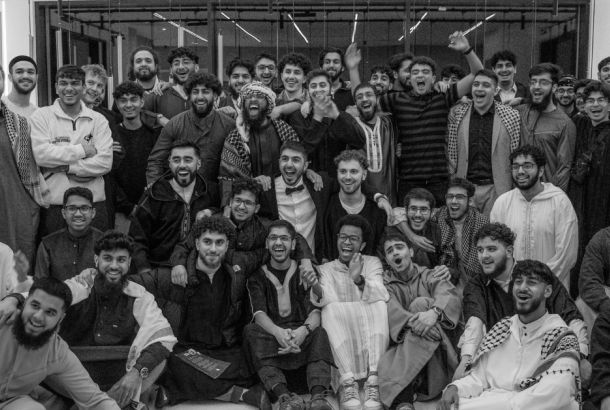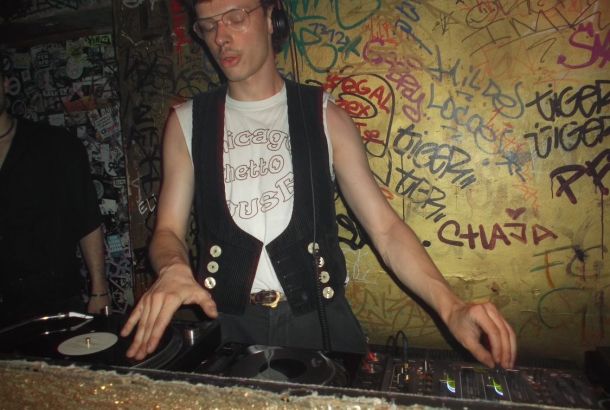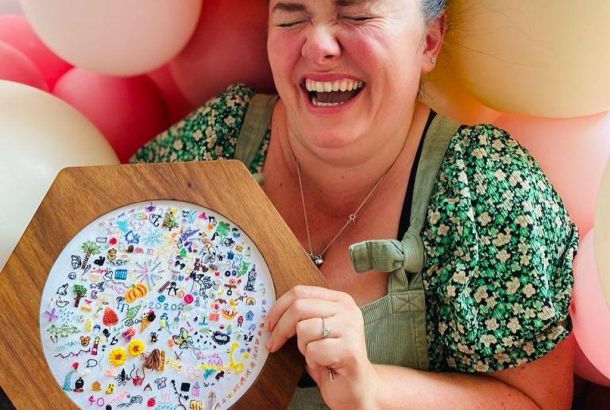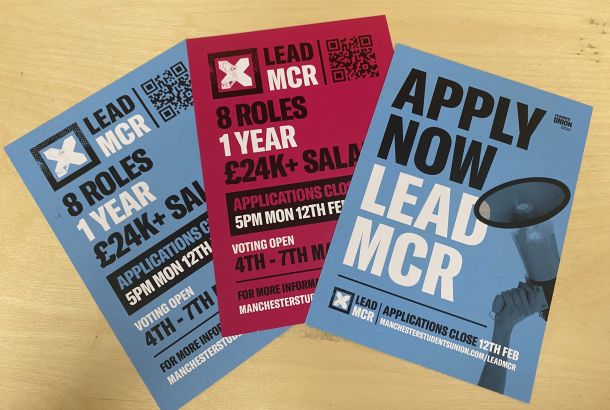Manchester’s continuing problem with inaccessibility: On the redesign of NQ’s Stevenson Square
By Erin Osman
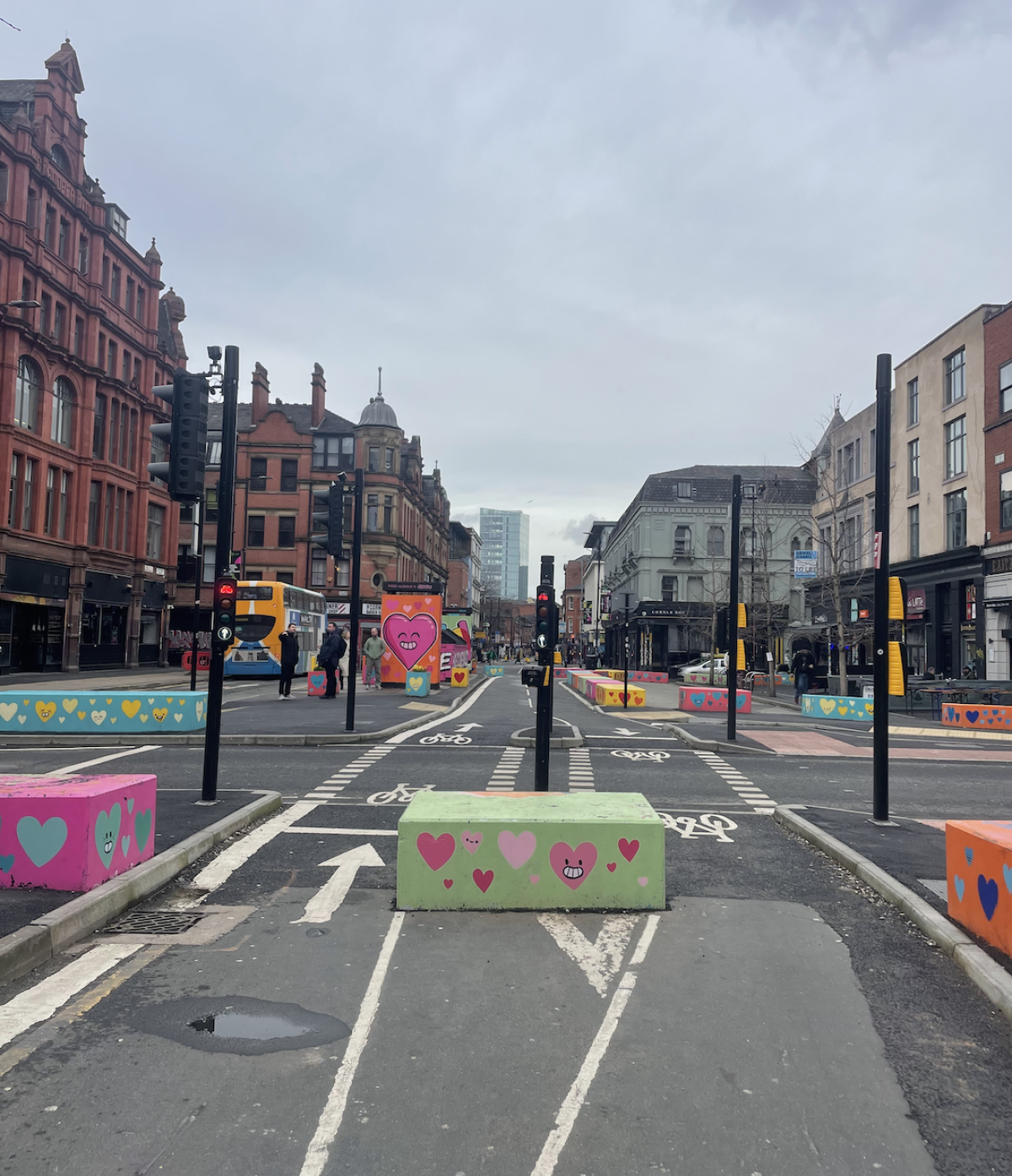
In recent years, the Northern Quarter has become one of Manchester’s most popular neighbourhoods. The district is named after its location in the city and came into being in the 1990s as a space for independent venues for retail, entertainment, food, and drink.
Now frequented mainly by Manchester’s millennials, the space is crowded with quirky bars, artisan cafés, eclectic street art, restaurants, well-stocked charity shops, and fashionable record stores.
Stevenson Square sits at the heart of the Northern Quarter and has just recently undergone a multi-million plan reinvestment in an effort to become fully pedestrianised.
Prior to this, the square had already gone through various stages of existence: from being a bus stand before the pandemic to becoming partially pedestrianised during a COVID-stained 2020 summer which allowed restaurants and bars to continue to operate with outside space for social distancing laws. In 2022, the council decided to make this pedestrianisation a permanent fixture by giving surrounding restaurants access to permanent outdoor seating areas.
The redevelopment plans for Stevenson Square sounded hopeful, with plans for new cycleways, relocation of loading bays, removal of unsightly and now-unnecessary pay-and-display machines, and widened footpaths.
While pedestrianisation in this case means pedestrianisation mainly for the paying customers of bars and restaurants – which is perhaps a separate issue, to do with a chronic lack of free “Third Spaces” in UK cities – Manchester City Council’s redevelopment plans certainly promised to achieve important progressions for the future of its city landscape.
And yet, with redevelopment plans now complete, the design has had varying – in some cases wildly disappointing – outcomes. The main problem with these improvements aren’t aesthetic ones, but are to do with issues of accessibility, with various groups justifiably feeling excluded by multiple failures in the design.
I spoke to Manchester-based visual impairment charity Henshaws and one of their charity patrons, Dave Steele (known online as The Blind Poet), to learn more about how the redesign in Stevenson Square fails and particularly lets down people with sight issues.
Over a Zoom call with Henshaws, I met Stephen and Katie, who both work with the charity here in Manchester. Stephen describes Henshaws as “a charity supporting blind and visually impaired people.”
During the call, both Katie and Stephen were keen to clear up some common misconceptions surrounding visual impairment. The charity makes sure to use the term “visually impaired” as opposed to just “blind” because of a public perception of blindness that believes “you can either see, or you can’t see.” “Actually,” they tell me, “it’s a spectrum. Most people who are registered blind have some functioning sight, but it can be severely limiting and affects their daily life.”
As a charity, Henshaws mostly work at an individual level – supporting people locally. “We contact people in the local area who receive a certificate of visual impairment. And we support them on their… we call it their journey.”
Although Stephen confesses that this is “jargon that [he] sort of hate[s],” he admits that it does nicely describe the “change from when someone’s initially diagnosed, to then coming to terms with that a bit later on. Being equipped to be more constructive, and be able to look at all the things that they can do.”
On Stevenson Square, they begin, “We saw this wonderful plan that looked a bit like a plaza in Italy. What we’ve got is this thing that doesn’t quite look like that and that doesn’t quite work.
“There are lots of things that are particularly bad for people with visual impairments,” and so, they tell me “We contacted the media about that.
“They’ve put in these concrete blocks.” You might have seen them: new, colourful Hostile Vehicle Mitigation (HVM) blocks, installed for counter-terrorism purposes, have had a lot of negative press since their installation. The most common complaint is that they are so different from their depiction in the promised plan.
Stevenson Square
— Harry Gray (@H_H_Gray) December 2, 2023
Render vs reality pic.twitter.com/fCWEf4ObZI
“These big, concrete blocks, they’re just haphazardly put,” Stephen says, “It looks as if my son’s emptied his Lego box.” The blocks are a potential trip hazard and are seemingly placed at random, meaning that their presence can be unexpected – a particular danger to those who are visually impaired.
There are also issues with the crossing facilities at Stevenson Square. Pedestrian crossings, especially newly installed ones, typically have hidden features called ‘cones’. These are located underneath the pedestrian crossings and rotate when it is safe to cross the road. In Stevenson Square, there is inconsistency in the placement of these cones, with some crossings with and some without them.
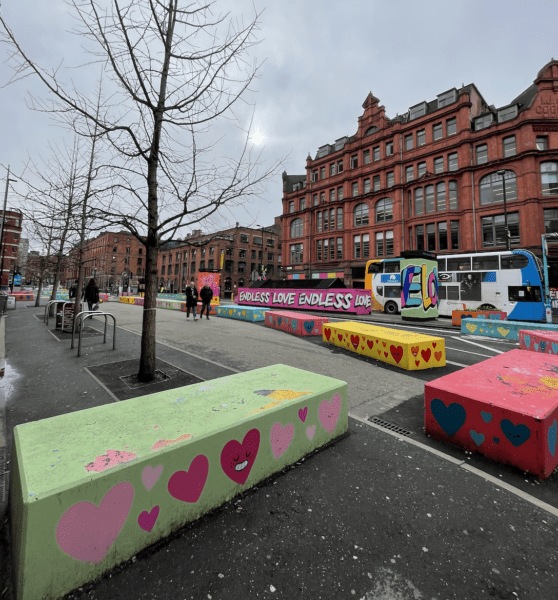
Dave Steele, a patron of the charity, has a condition called retinitis pigmentosa. “RP for short,” he explains. The condition affects Dave’s retina, “which is basically the thing that sends the signal of what the eyes are seeing to the brain for it to kind of translate.” It is a condition that “basically kills off the retina.
“It starts off with night blindness, so struggling from light to dark places […] and then your peripheral vision starts to go. So it’s like a tunnel closing inwards. Then after that, your central vision goes. And often it results in complete blindness.”
Dave describes some of the other ways that Stevenson Square is hostile to people with visual impairments. “There’s no clear signage, you know, walkways and cycle lanes overlap each other with pretty much nothing to distinguish them for anyone who can’t see them.”
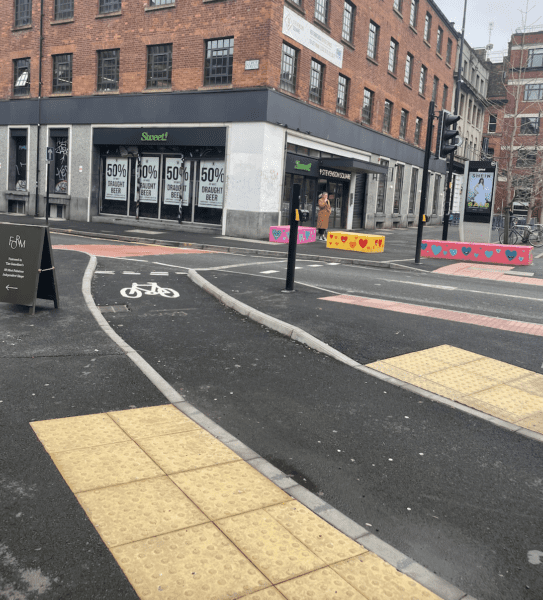
“The concrete slabs all over the place make it look like some kind of go-kart track.”
The redesign has also curiously gotten rid of so-called drop curbs: parts of the pavement which drop down to allow you to know where to cross the road. Drop curbs are crucial signposting points for people with visual impairments.
Dave says he was “shocked” at the lack of thought that had gone into the redesign. Stephen and Katie from Henshaws agreed. While pavement cafes and pedestrianisation are a good thing (they say they are “slightly nervous of being party poopers and spoiling everyone’s fun”), they contend that “it needs more thought and care.”
Henshaws is not a campaigning charity and is not here to just “bash the council.” But they will advocate for their service users. “What we want to do is find opportunities where we can say, look, this could have been better, and probably wouldn’t have cost you anything more than what you’ve already spent if you’d spoken to us at the planning phase.”
“It is not about suddenly doing something afterwards to give access. It is about design right at the very start.”
Stephen and Katie tell me that many of the people Henshaws work with simply avoid spaces where they would struggle to move about. “It is too hard, too scary, too dangerous.”
They liken visual impairment to the experience of a normal-sighted person navigating a dark room with the light switched off. If it was a room that the person was familiar with, navigating it wouldn’t pose too much of a problem; we can anticipate the corner of the bed, or the placement of the wash basket, the stack of books in the corner of the room, the pile of clothes on the floor. If it was a room we were unfamiliar with, the experience would quickly become difficult, disorientating, and much more scary.
What if the room was not a room at all but a busy, open street, with children playing and bikes zooming past you; with a lack of signposting or drop-down curves; with big, seemingly random placed concrete slabs acting like some kind of assault course in the middle of the street?
With city councils continuing to create spaces and undergo huge, multi-million-pound reinvestment projects without the initial consultation of charities like Henshaws, or people with visual impairments like Dave Steele, who have all the knowledge and are willing to help, perhaps it is time to ask whether there is a bigger cultural problem at play.
Stevenson Square’s redesign is fully compliant with standards set by the Department for Transport, but Dave asks, “Compliant for who?” When the needs of the people whom these standards are set to protect aren’t being met, it begs the question: are these standards fit for purpose?
When contacted for comment, councillor Tracey Rawlins, Executive Member for Environment and Transport said:
“As the Council has made clear from the beginning of the year, remedial works have been planned for Stevenson Square to improve the final layout and appearance of the project.
